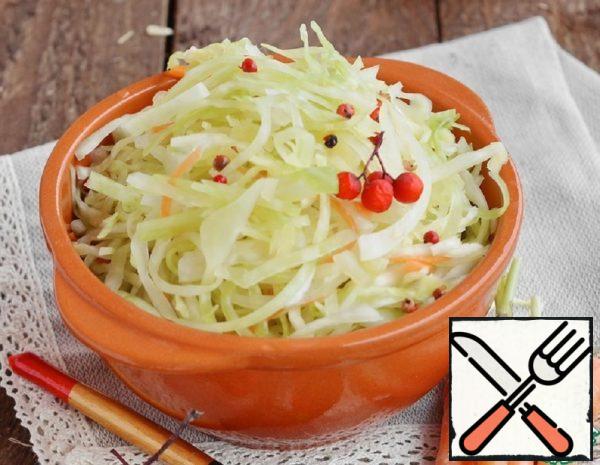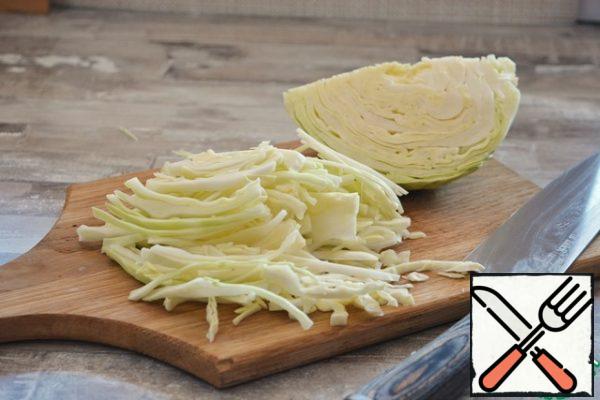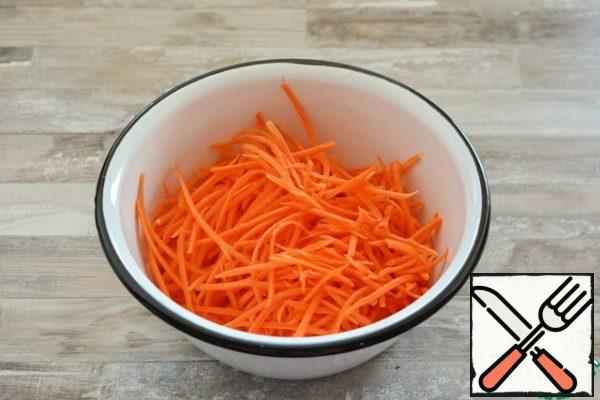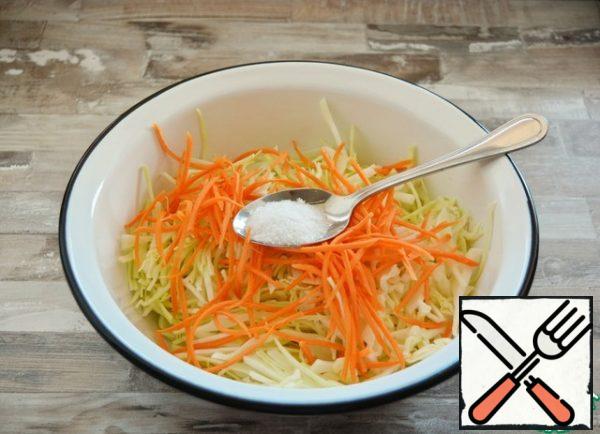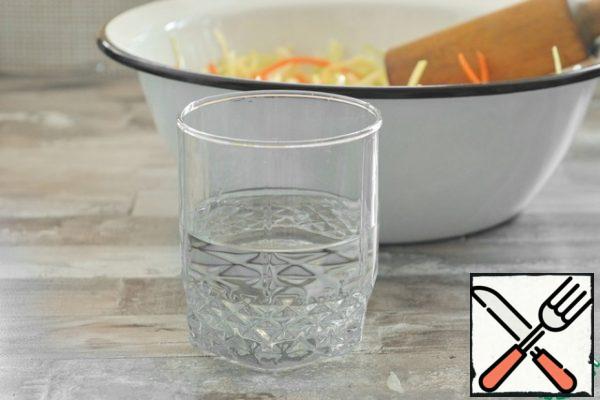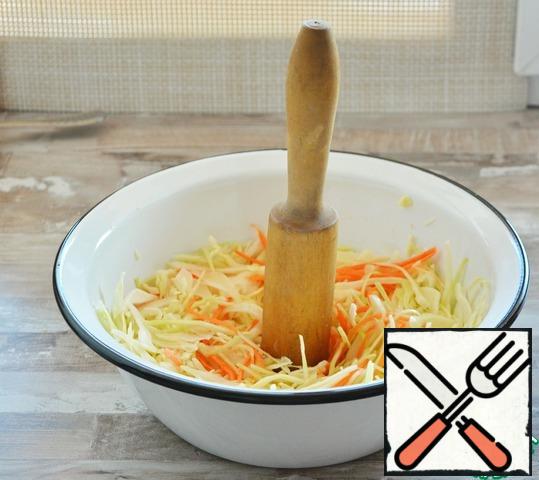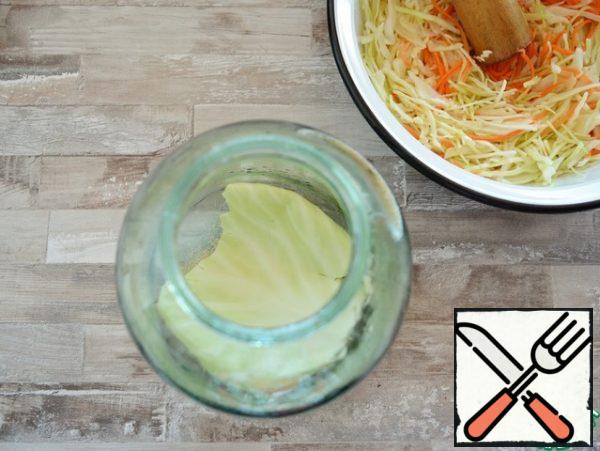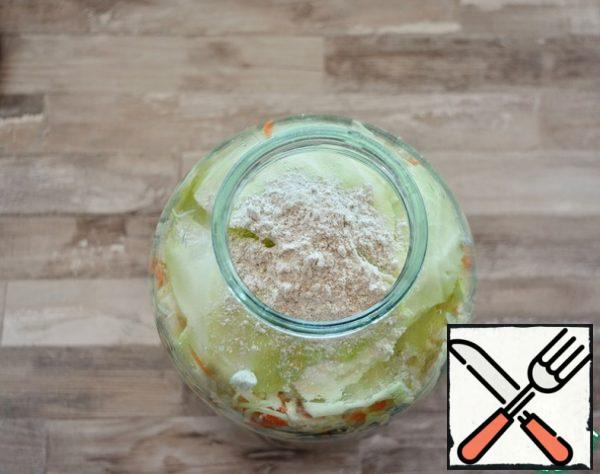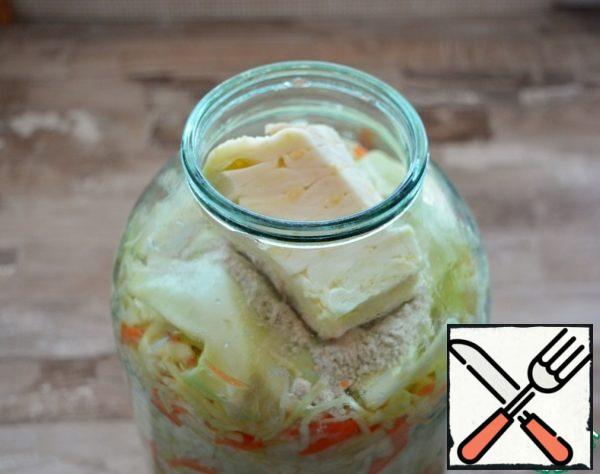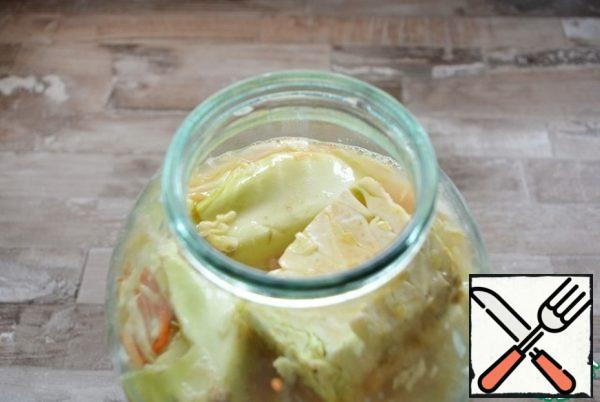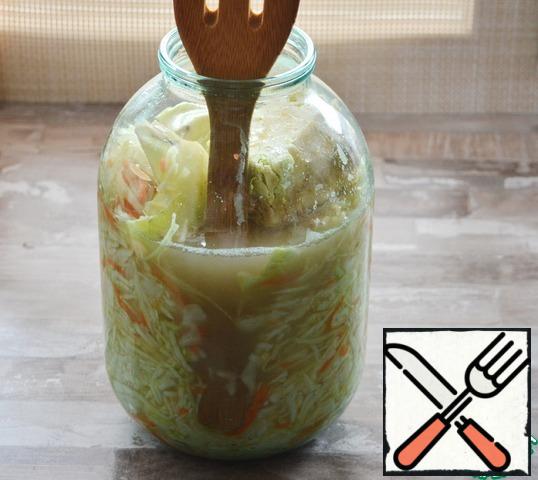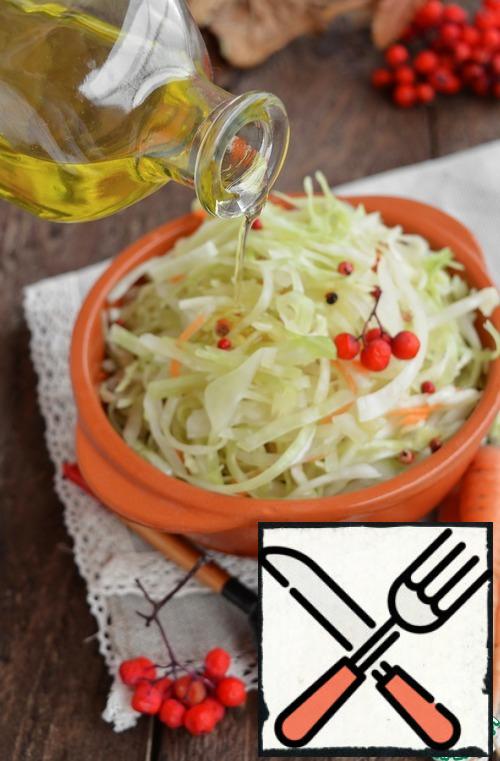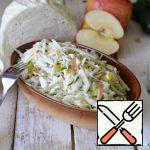What do good housewives do in autumn? That's right, sauerkraut. For the winter, the soup is boiled, and the potatoes are boiled and served with onions and sunflower oil. And in general, what kind of winter without a jar or two of sauerkraut? According to this recipe, one of my very distant relatives was sauerkraut. Cabbage turns out to be slightly tart, "spicy", vigorous and very tasty. Try it, and suddenly you like it?
Instructions
- And use a wooden pestle to "stomp" the cabbage a little. It is not necessary to mash or rub it hard. Just tap 5-7 times with the pestle up and down and mix the cabbage with the carrots. It is more convenient to do this in portions. Usually I divide the whole volume into 4 parts and "trample" cabbage in 4 steps
